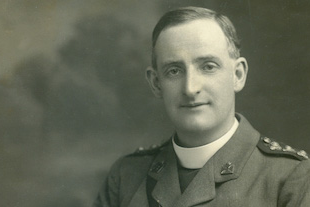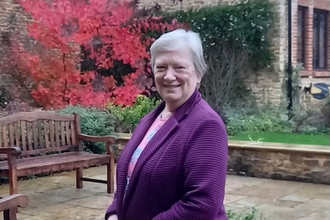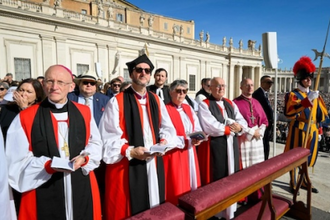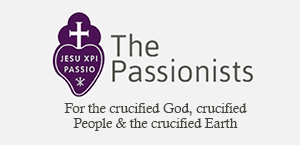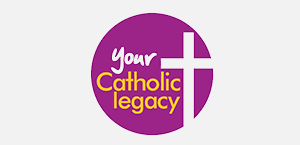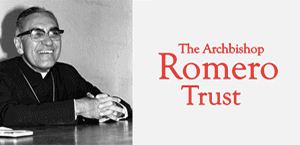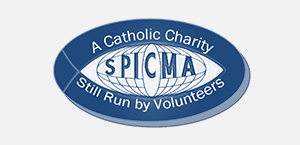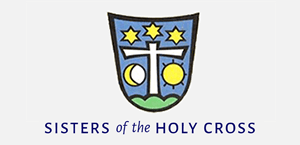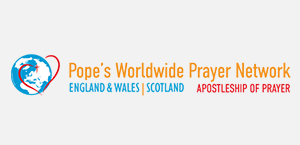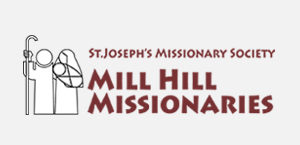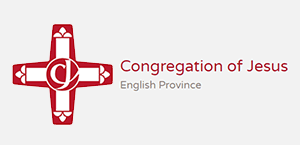Remembering Fr Willie Doyle
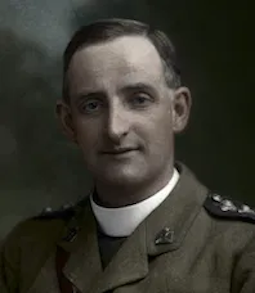
Father Willie Doyle SJ
The following address was delivered this evening (Sunday 9 February) by Bishop Tom Deenihan, Bishop of Meath, at the Embassy of Ireland to the Holy See, to mark the Jubilee of Military and the Cause of Father Willie Doyle SJ - an Irish Jesuit who was a chaplain to the Royal Dublin Fusiliers and was killed while ministering on the battlefield in 1917, during World War One.
May I begin by thanking Her Excellency, Frances Collins, the Irish Ambassador to the Holy See and His Excellency, Chris Trott, the British Ambassador to the Holy See, for hosting this event and for their kind invitation. The joint approach by both Ambassadors is a fitting tribute to the man who is the subject matter of our gathering this afternoon, and is also a reflection on the history of both our countries which has links and intersections which go beyond and defy popular narratives and types.
Despite our rather dated and exaggerated title of the Isle of Saints and Scholars, we have no great number of canonised saints. Saint Oliver Plunkett, Archbishop of Armagh and the last of the Tyburn martyrs was second last, born 400 years ago this year in the Diocese of Meath and canonised here in Rome fifty years ago this year. Saint Charles of Mount Argus was the most recent but only four or five have been through the formal canonisation process.
Rev Professor Vincent Twomey, in his book The end of Irish Catholicism, expressed the view that Irish Catholicism was more impacted by the Reformation than we care to imagine. The cult, feast days and scarcity of Causes for the canonisation of Saints are, perhaps, a manifestation of that. The Europeans celebrate better! Hopefully, with the Cause of the Servant of God, Father Willie Doyle, and, indeed, Sister Clare Crockett, whose cause was opened last month, that will change.
It is remarkable that such a gathering would be hosted one hundred and eight years after Doyle's death by both the Irish and British Ambassadors to the Holy See. There is a certain unity to this celebration which transcends nationality, politics, popular perception and creed. That is as it should be and it is very much appreciated.
Doyle himself would have seen, I think, an appropriateness given that he was conscious of the need for everyone, the baptized, the professed and the ordained, to work for the Kingdom of God. Indeed, during his noviciate in Meath Diocese, he signed an oath offering his life. Interestingly, it was signed in his own blood and is now one of the very few first class relics of Doyle, given that his body was not recovered from the battlefield.
Doyle was a man of intense spirituality which saw him, as well as risking and sacrificing his own life, as a spiritual director encouraging many towards priesthood and religious life. That latter aspect is important too. Many of the writings that he has left behind relate to Retreats and Spiritual Conferences that he gave in convents and monasteries throughout the island of Ireland. He was well known at the time.
Indeed, by way of example, Doyle was instrumental in getting Sister Maria Dwyer, a Cork woman and daughter of a local businessman, William Dwyer, who owned the Sunbeam Clothing Factory, to return from a convent in Belgium in answer to her father's pleadings. Doyle negotiated a situation whereby if Dwyer built a poor Clare monastery in Cork, his daughter would return to it. Dwyer did and the Poor Clare Monastery in Cork is still going well, thank God.
But, of course, that heroic desire of Doyle to serve and promote God's Kingdom found ultimate expression on the battlefield when he was ministering to soldiers, some of whom were Catholic, others Anglican. After bringing one to safety during the Battle of Langemarck on 16 August 1917, he returned to the line of fire and was killed ministering to others. While his body was pulled to safety, when his comrades returned later to retrieve it, the place of safety had been bombed too and the body was never recovered.
Pope Francis talks of the Church being a 'Field Hospital', it is an image that is appropriate here. Indeed, we are told that Doyle was nominated for the Victoria Cross for bravery but it was not granted due to him being, as an article in The Irish Times put it a while ago, suffering from the three disadvantages of being: a Catholic, a Priest and, dare I say it, a Jesuit! He was awarded the Military Cross for bravery in 1916.
Since his death in 1917, his cult or following has remained strong and widespread. Since announcing the opening of the Diocesan Investigation in 2022, I have been struck by the extent of that cult. Doyle's name comes up in the most unexpected of places.
Let me give some examples:
My favourite story of him is contained in Alfred O'Rahilly's biography of him, written almost one hundred years ago. After Doyle's death, his father's house was being burgled and Doyle's father was powerless to stop it. The burglar came across a photograph of Father Doyle on the dresser and asked who it was. Doyle's father said that it was his son who lost his life as an Army Chaplain. The burglar responded that he knew him. He was a soldier, he said, and Doyle was his chaplain. He said that Doyle was a good man, dropped his bag of stolen property and walked out empty handed. Perhaps a case of Doyle's first miracle?
Alfred O'Rahilly, the author of the book, was a former President of University College Cork, and was a most colourful character. He ended life as a Holy Ghost Priest in Dublin after his wife died. He was also very much involved in the Legion of Mary and his biography, along with the Legion of Mary spreading the cult, is in no small way responsible for the strong cult that Doyle enjoys to this day.
Another recent article in The Tablet by Melanie McDonagh quotes the journalist Sir Philip Gibbs who described Doyle as 'speeding all day, hither and thither over the battlefield like an angel of mercy; his words of absolution were the last words heard on earth by many an Irish lad that day, and the stooping figure of a priest and father filled the glance of many in their agony.'
Another tribute to him came from a member of the Orange Order who said that, 'We could not possibly agree with his religious opinions, but we simply worshipped him for other things. He did not know the meaning of fear. He was as ready to risk his life to take a drop of water to a wounded Ulsterman as to assist men of his own faith and regiment. Philip Gibbs called him a martyr for Charity.
Doyle's spirituality and his daily sacrifices also echo the Little Way of Saint Therese of Liseaux. Indeed, I have met many religious who have said that they were inspired in their own vocation and formation by Doyle's minor daily sacrifices.
Dr Patrick Kenny's more recent book, To raise the fallen, provides further account, scholarship and inspiration. It is remarkable that so much has been written and that the demand for such is strong
While the ultimate sacrifice of Father Willie Doyle was made over one hundred years ago, Doyle has something to say to our own time when bridge builders are scarce. Nationality, creed and political belief were to him secondary and subservient to being a child of God. Indeed, one can see so many of the themes of Pope Francis' papacy in Doyle's life: charity, generosity, bridge building and brotherhood, Fratelli Tutti! Christians always build bridges!
Each year, on the first of November, we celebrate the Feast of All Saints. A celebration of those whose statues and pictures adorn our churches and homes. But that Feast also commemorates the more Pauline interpretation of Sainthood. Those who led good and holy lives and are now with God in heaven. We have known those Pauline Saints. They handed on the faith to ourselves, they worshipped in every church, they suffered, they inspired, they prayed and they loved.
There can be no doubt that Doyle is one of those Pauline Saints. It is inconceivable that the God of Love and the Father of all mercies would not be moved by his heroism to those who suffered and his determination to bring absolution and comfort to those who were dying in muddy and bloodied fields, despite nationality, politics and creed.
The Canonised Saints are somewhat different. Their Cause has been tried and tested by the Church and miracles have been attested to.
The Diocese of Meath, and the Father Willie Doyle Association, particularly through Dr Kenny and Father John Hogan, has begun the cause for Canonisation for Father Willie Doyle. We cannot but be moved by his story, we are inspired by his faith, we are encouraged his generosity and witness, and we pray that he will be soon counted among those whom we publicly venerate and implore. The cause is progressing well. The Theological investigation is complete, the historical Commission is almost so and the Tribunal is making great progress. I expect to be closing the Diocesan stage this year. Whether it will be successful or not, we cannot know, we can only hope. I actually believe that it will be.
In the meantime, Father Doyle's charity, generosity and evangelical zeal has something to offer ourselves. His regard, compassion, sacrifice and witness to all who are suffering, regardless of nationality or creed, is still a lesson for our time - perhaps a lesson for our time more than it ever was. This weekend, on the Jubilee of Military Personnel, we invoke his prayer for those who are on battlefields and his encouragement on those who may be discerning a vocation.
Above all, we pray that one day we shall count him amongst the canonised saints and enjoy his intercession on our behalf.
In 2022, Bishop Tom Deenihan, Bishop of Meath, opened the Cause in the Cathedral of Christ the King in Mullingar - See: www.youtube.com/watch?v=4TVAX--BWsI





